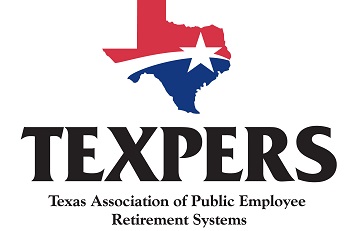The Texas Public Policy Foundation (TPPF) and others like it have developed a reputation around the state capitol for sometimes playing fast and loose with budget facts. This year, they are doing the same with pension facts.
In 2013, Governor Rick Perry took issue with the TPPF’s assessment of the Texas appropriations bill. The TPPF is an Austin think-tank which is regarded as the leading conservative issue driver in Texas. It had claimed that Texas’ budget was similar to that of California’s in its runaway spending.
Gov. Perry responded to the TPPF report by saying “I did read some of the criticism and I’m not sure that those who were making that criticism have a really good handle on the Texas budgeting process. Frankly, I don’t understand the math.”
In recent months the TPPF has taken the same fuzzy-math approach to assessing the health of Texas’ state and local pensions.
The group’s pension policy analyst has published two op-ed’s in major Texas newspapers making wild claims about “unworkable systems” being in “rough shape, and things are getting rougher.”
People with significant pension experience reviewed the op-eds and came up with a similar conclusion to Gov. Perry’s. It could be restated like this: “We aren’t sure those who are making the criticisms have a really good handle on Texas pensions.”
Max Patterson, the executive director of the Texas Association of Public Employee Retirement Systems, noted how the TPPF op-ed pointed to a $57 billion gap between earned benefits and plans’ assets at pensions across the state.
Of course, Patterson noted, that appears to be a large number, but $32.1 billion was due to the Teachers Retirement System, the largest in the state, with 1.4 million participants. Three other statewide pensions, serving 992,000 participants account for another $14 billion, or $46.1 billion total.
So 80% of the TPPF’s headline number is attributable to four statewide plans with nearly 2.5 million participants. The remaining $11.4 billion gap is spread among roughly 90 local pensions across Texas, and almost half of that amount is due to four pensions in Houston, Dallas and Fort worth, Patterson said in response to the TPPF op-ed.
Tim Lee, executive director of the Texas Retired Teachers Association, also questioned the TPPF assessment: “Last year, TRS’ investments saw an $18 billion return and paid out $8.5 billion in retiree annuities. The average monthly annuity for our retired teachers is $1,995. One out of every 20 Texans is a participant in TRS… Investments account for more than 64 percent of the value of this $130 billion fund, more than three-fifths of the pension fund’s revenue.
“The TRS defined benefit plan is a great bargain for the Texas taxpayers and provides a modest but reliable retirement for our public educators. …We believe [the TPPF analyst’s] time is better spent trying to improve retirement security for all Americans, not robbing dedicated school employees of a benefit they have paid into their entire career,” Lee said.
Tuesday, July 28, 2015
Thursday, July 2, 2015
401(k)s: “A lousy idea, a financial flop, a rotten repository of our retirement reserves”
Our last blog entry noted how the opponents of defined benefit plans willfully peddle an unwarranted assumption fallacy, that 401(k)s are the only solution to the liabilities that some (not all) pensions are currently experiencing.
But, we continue ask, are 401(k)s really the best alternative in seeking the best outcome for America’s hard working middle class?
There is a growing body of evidence that they are not and the headline of this blog entry is a summation of Stephen Gandel, one financial journalist who is writing on the issue.
We recommend reading Gandel’s entire article, “How easy is it to become a 401(k) millionaire? Here’s the truth,” but we’ve posted his conclusion below:
But, we continue ask, are 401(k)s really the best alternative in seeking the best outcome for America’s hard working middle class?
There is a growing body of evidence that they are not and the headline of this blog entry is a summation of Stephen Gandel, one financial journalist who is writing on the issue.
We recommend reading Gandel’s entire article, “How easy is it to become a 401(k) millionaire? Here’s the truth,” but we’ve posted his conclusion below:
If you want to end up with $1 million dollars in your 401(k), all you have to do is work for the same employer for more than three decades, save about 40% more than most financial planners dare to recommend, land a job at of the rare companies generous enough to match 5% of your contributions, and totally crush the market, while you go about your normal day job, avoiding all the sudden financial traumas that lead people to borrow against their retirement funds.Of course Gandel ridicules the possibility for all those components of the perfect world equation that are offered by Fidelity Investments. In sum, 401(k)s are sending many hard-working, hopeful American workers down a rabbit hole of future despair. We would not wish them upon our worst enemies.
Subscribe to:
Posts (Atom)
